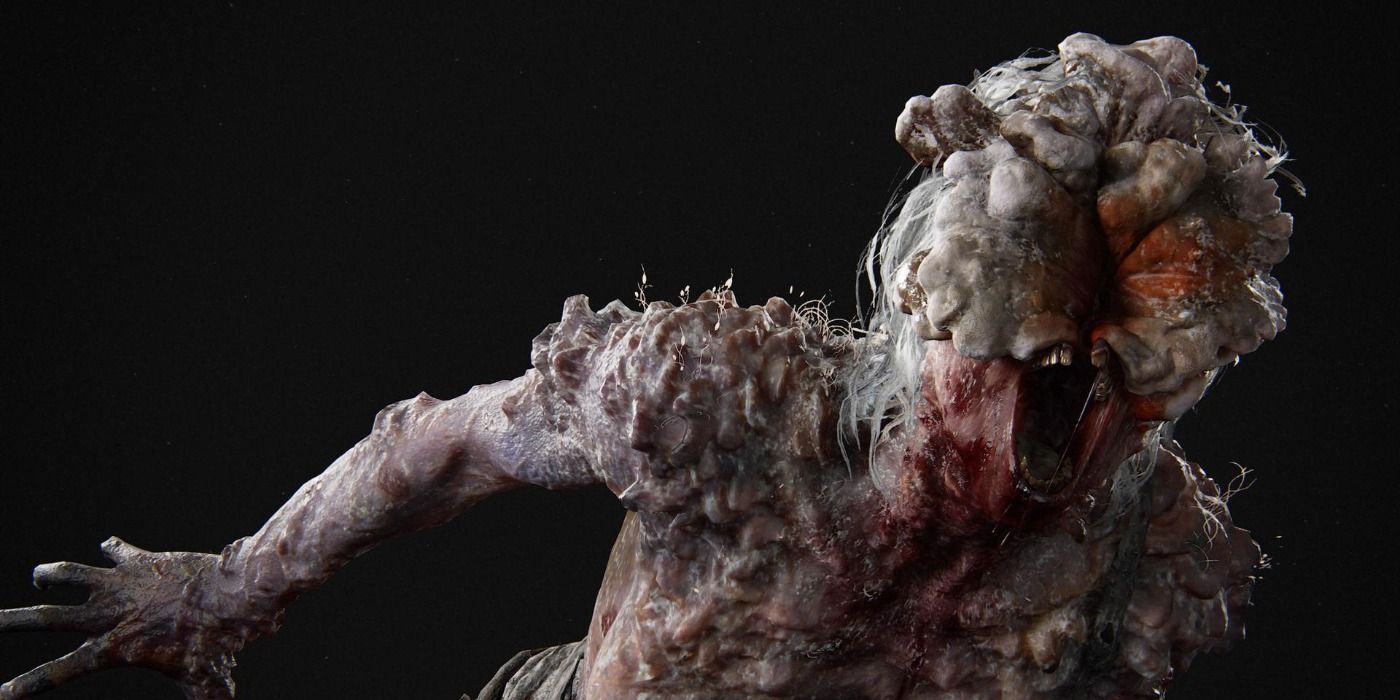One of the defining features of The Last of Us games are the monsters known as clickers. Named for the creepy sound they make as they mindlessly wander in search of food, clickers are the result of a mutated brain infection that is based on a real life fungus.
While The Last of Us and The Last of Us Part 2 are commonly thought of as being set in a zombie apocalypse, the most iconic enemies in The Last Of Us don't appear as traditional zombies. Clickers are created when humans are infected with a mutated form of a fungus called cordyceps. Over time, an infected human loses brain function and becomes a zombie-esque creature referred to as a stalker, before eventually mutating into a clicker. While clickers retain a humanoid shape, the body begins to manifest outward signs of the fungal infection, with the head in particular becoming completely warped.
Creative Director Neil Druckmann, who was a creative lead for The Last of Us and The Last of Us Part 2, recently Tweeted an image of the actual cordyceps fungus that inspired the mutated clickers. In real life, cordyceps is a parasitic fungus that attacks bugs, taking control of their bodies and replacing tissue over time. The short video Druckmann retweeted from the Science Channel shows a cordyceps growth, and it is easy to see the inspiration designers took from the fungus when designing the clickers. Like the creatures of The Last of Us, real cordyceps growths eventually release spores that can infect other bugs, self-perpetuating a "zombie bug apocalypse" as the Science Channel calls it.
The Last of Us Clicker Fungus Inspiration Looks Creepily Familiar
Clickers are already fairly nerve-wracking enemies in The Last of Us. Players, who have limited ammo to deal with enemies, often have to sneak by clickers, listening for the sound they make in an attempt to determine where clickers are so they can be avoided. Knowing that these monstrosities are inspired by a real-life parasite adds another layer of creepiness to clickers, especially seeing the similarities between how clickers are created and how real cordyceps behaves among bug populations.
When The Last of Us draws from real life is when it's at its most terrifying. The eeriness of the opening sequence of the first game in particular, with the way normal life begins to unravel into chaos and confusion, taps into that part of the brain that tells players that this could happen to them. Looking at photos of the cordyceps fungus and the shapes that are too familiar to fans of The Last of Us, adds just another unnerving element of "What if?" to the game.
Source: Neil Druckmann

